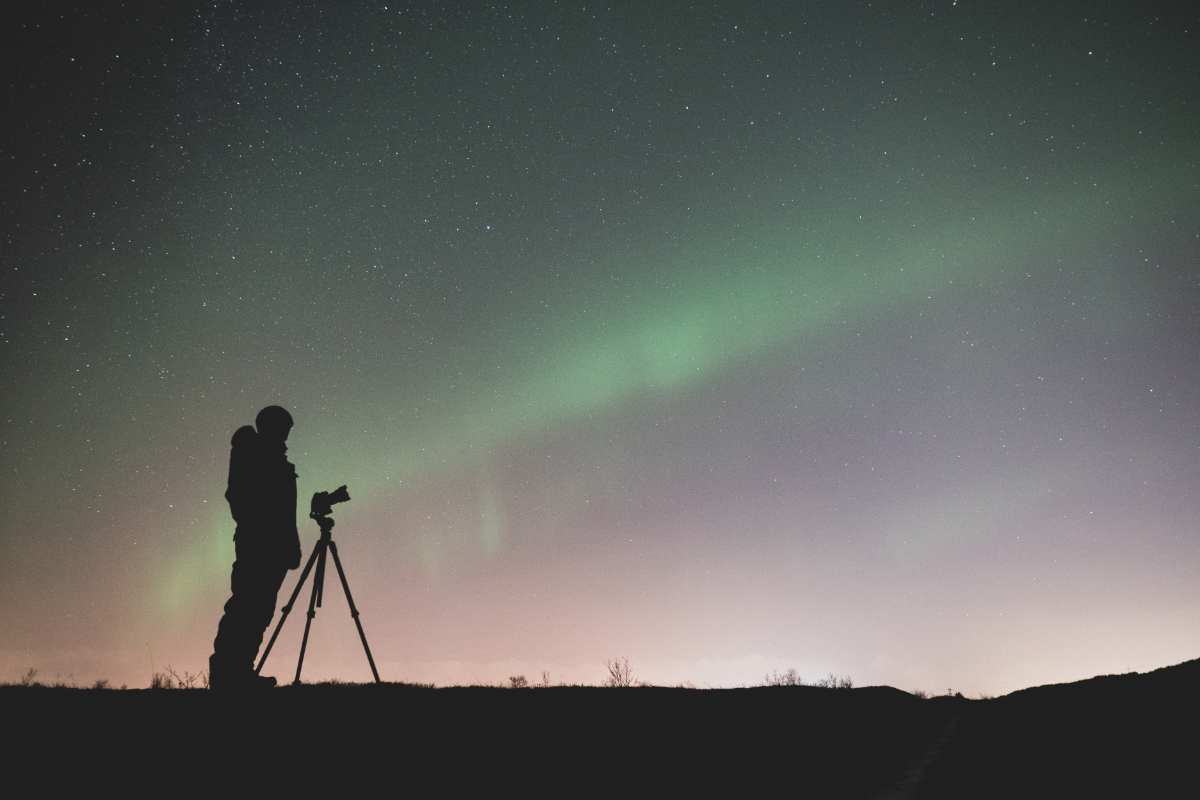Iceland in April is unpredictable. One moment it’s sunny, the next you’re driving through sleet. If you’re planning a road trip, knowing what to wear in Iceland in April makes a huge difference.
Pack the wrong gear and you’ll either be cold, soaked, or stuck with clothes you will never wear. This guide will teach you how to stay warm, dry, and comfortable without overpacking.
We will just give you straightforward tips based on what actually works when you’re out there dealing with spring weather and Icelandic roads.
What’s the Weather Like in Iceland in April?
April in Iceland walks a fine line between winter and spring. The weather here changes fast, and that’s not an exaggeration. Check out this local weather guide if you want a better understanding of what’s awaiting you. But here’s what matters the most:
Typical Temperatures and Conditions
For those who wonder how cold Iceland is in April, know that Reykjavik usually sits between 1°C and 6°C (34°F to 43°F), with an occasional warm day of about 7°C (45°F). Nights often hover near freezing. Northern Iceland? Even colder.
You’ll get a healthy mix of rain and snow, especially earlier in the month. Expect around 8 to 18 rainy days and 5 to 14 snowy ones. Total perception ranges from 26 to 59 mm (1 to 2 inches). Wind picks up often, making the air feel colder than it is.
On the bright side, April brings longer days. You’ll get roughly 140 hours of sunshine in this month. Early April offers about 13 hours of daylight, while late April jumps past 16 hours. Sise starts as early as 6:00 AM by the end of the month, while the sun begins to set at around 9:00 PM.

Road Conditions and Daylight Hours
The Ring Road and most of the major routes are usually in good shape this time of year, especially in the south and around Reykjavik. That said, don’t get too confident. The weather can turn quickly, and snow or ice can sneak in fast, especially up north or in the higher elevations.
Smaller rural and mountain roads? Forget it. F-roads stay closed until summer. Thanks to the extended daylight, you’ve got more time to explore without racing the sunset. Early April gives you about 13.5 hours, and by the end of the month, you’ll enjoy nearly 17.
Why Weather Affects What You Pack (Especially If You’re Driving)
Weather in Iceland doesn’t just mess with your plans. It messes with your packing, too. Cold? You’ll need layers. Windy? That puffer jacket blocks a gust. Rain or snow in the forecast? Waterproof gear moves from optional to essential.
Even your shoes need to match the forecast. Some days call for waterproof boots, others don’t. When it comes to what to wear in Iceland, the weather decides for you.
| City | Average Temperature (°C / °F) |
Daylight Hours | Rain/Snowfall (mm) | Weather Notes |
|---|---|---|---|---|
| Reykjavík | 4°C / 39°F | 13–16 hours | 45–55 mm | Milder temps, occasional rain, some snow in early April |
| Akureyri | 1°C / 34°F | 13–16 hours | 35–45 mm | Colder, more frequent snow flurries than Reykjavík |
| Egilsstaðir | 2°C / 36°F | 13–16 hours | 25–35 mm | Chilly, often drier than other parts of Iceland |
| Ísafjörður | 0°C / 32°F | 13–16 hours | 50–70 mm | Coldest, snowiest region—roads can be icy |
Packing Strategy for a Self-Drive Trip in April
Packing for Iceland in April isn’t just about looking good in glacier photos. It’s about staying warm, dry, and sane while hopping in and out of your car, dodging sudden weather shifts, and squeezing everything into a compact trunk.
What Clothes to Wear in Iceland Spring: The Layering System
Let's keep things simple. You need three layers. No more, no less.
- Base Layer. This sits the closest to your skin. Go for thermal or moisture-wicking materials.
- Mid-Layer. This is your warm zone. Down is warm, but not bulky, so think light and packable.
- Outer Layer. Waterproof. Windproof. Breathable. If it doesn’t tick all three, leave it at home.

Driving in Iceland in April (Comfort + Safety)
You're not just walking around waterfalls. You're also behind the wheel for long stretches. What you wear matters. Self-driving safety in Iceland in April matters.
Skip anything bulky or stiff. You want layers you can move in. A fleece that bunches up behind your back will get old fast. And IC hands on the freezing steering wheel? Not fun. keep gloves and the beanie within arm’s reach
If you plan to venture beyond Reykjavik or the south coast, don’t mess around. Read this guide to Iceland’s vehicle options and rent something 4WD. You’ll thank yourself later when road conditions turn sketchy.
Space-Saving Packing Tips for Small Rental Cars
Roll your clothes instead of folding them. You'll fit more, and it's easier to see what you've packed. Stuff smaller items like socks into shoes to make use of every inch.
Put the heaviest things at the bottom of the trunk so they stay put while driving. And always have a small bag with dry clothes somewhere easy to grab. If you end up wet from a surprise downpour or muddy stop the last thing you want is to unpack your whole car just to change.
Want more on how to pack smart? Check out this breakdown of car sizes in Iceland so you know exactly how much space you'll be working with.
.jpg)
Clothing Essentials for April in Iceland
If you're trying to figure out what to pack for Iceland in April, you're not alone. What works in the morning might be useless by lunch. That's why getting your layers right matters more than packing training outfits.
Base Layers: Thermal and Moisture-Wicking
Start with a layer that hugs your skin. You want thermals that trap heat and fabrics that pull sweat away. Cold and damp is a brutal combo, so avoid anything cotton. Go with a Marino wool or some synthetic blends instead. They’re warm light and drive fast.
Pro Tip: The northern lights are still visible in early April, and those late-night sky homes get cold. Pack something warm enough to handle standing outside for a while, especially when the stars are out and the heater’s off.
Mid-Layers: Fleece and Insulation
The mid-layer brings the heat. Think fleece, lightweight down, or synthetic insulation. This one’s all about trapping warmth without bulk. You want something you can wear in the car, hike in, or lay under a shell when the wind kicks up. Bonus points if it packs down small.
Stick to one solid piece that you can wear daily and rotate out if needed. You just need one that does the job well.
Outerwear: Waterproof and Windproof Gear
Now we're talking about your armor. This layer needs to keep out of the wind and water without turning you into a sweaty mess. This layer needs to keep out wind and water without turning you into a sweaty mess. It’s the one you will reach out for during surprise rain, sideways sleepy, or freezing gusts on top of a mountain.
Look for jackets with sealed seams, adjustable hoods, and breathable fabric. And when it gets soaked or muddy? Some travelers hit warm-air car washes in Reykjavik to dry out their jackets or blast the dirt off boots. Not exactly glamorous, but it works.

Must-Have Accessories for Spring Travel
Layers are a great start, but it's the small stuff that keeps you comfortable all day. A soaked pair of socks, foggy sunglasses, or cold fingers can ruin your mood fast. These accessories might seem basic, but skip them and you'll feel it.
Footwear for Mixed Terrain (Including Car Stops & Light Hikes)
Not every stop on your road trip needs hiking boots, but hey, you still need shoes that can handle the unexpected. Puddles, gravel, muddy parking lots. April gives you a little bit of everything. Waterproof hoes with a good grip go a long way. Bonus points if they slip on and off easily. You’ll be hopping in and out of the car a lot.
Need help deciding? Here’s a breakdown of the best shoes for Iceland’s terrain and when to wear them.
Gloves, Beanies & Neck Gaiters
Want something to cover your hands, ears, and neck. Iceland's wind can cut right through you, especially when you're near waterfalls or driving with the windows cracked open. Keep the warm beanie and gloves in the front seat. Neck gaiters are great too. They pack small and make a big difference.
Forgot yours? No stress. Iceland’s local grocery stores often carry gloves, socks, and other basics.

Sunglasses for Spring Glare + Swimwear for Hot Springs
April sun reflects off snow, water, and wet roads. Bring sunglasses. Polarized lenses help with the glare while driving or standing near icy rivers. And if a hot spring is on your list, toss in a swimsuit. They don't take up space, and you’ll regret not having one when you pass a geothermal pool that's too good to skip.
Nifty Tip: If you struggle with your sunglasses fogging up, then apply baby shampoo to your lenses and let the baby shampoo dry. Once the baby shampoo has dried, simply give it a quick rinse. The baby shampoo acts as a defogger.
Practical Gear to Keep in Your Rental Car
If you’re road tripping, your car becomes your closet, changing room, and backup shelter. Keep it stocked smartly.
Emergency Clothing Kit
Stash a spare outfit in a dry bag or a Ziploc. Nothing fancy. Just something warm and dry. Wet jeans or soaked socks can mess up your whole day. If you’re main bag is buried under luggage, this quick-access kit will save you a lot of hassle.
Blanket or Compact Sleeping Bag
You probably won’t need it. But if you break down or decide to hang out longer at a scenic spot, a small blanket or travel sleeping bag adds comfort, especially when the temperature drops at night.

Car-Friendly Storage Tips (Use That Trunk Smartly)
Soft bags beat hard cases every time. You can squish them into corners and stack them away when space runs low. Keep your go-to items in a tote near the front seat so you’re not digging through everything to find gloves or snacks.
Got a drunk with the hidden compartment? Use it to stash anything valuable. And before you hit the shops, learn how Iceland’s credit card and PIN setup works. It saves time and avoids awkward moments at the checkout.
What NOT to Pack for Iceland in April
Overpacking is easy. Iceland’s unpredictable weather makes you want to bring your entire wardrobe ‘just in case.’ Don’t do it. The trick is knowing what not to bring. Save space, skip the stress, and pack smarter.
Bulky Winter Gear You Won’t Need
Giant parkas, snow pants, and anything made for sub-zero expeditions can stay behind. April isn’t summer, but it’s also not the dead of winter. With the right layering, you’ll be warm without hauling a jacket that doubles as a sleeping bag. If it doesn’t compress, don’t bother.
Items That Take Too Long to Dry
Figuring out what to pack for Iceland in April means thinking beyond comfort. You need things that dry fast. Cotton jeans, thick sweaters, and heavy towels are dead weight. Once they are wet, they stay wet. And drying them using your car’s heater will take forever. Go with quick-drying fabrics and leave the sponges behind.
Non-Waterproof Clothing Mistakes to Avoid
If it soaks through, skip it. That stylish jacket or pair of sneakers you love? Not worth it if they can't handle a light drizzle. Bring stuff that blocks wind and sheds water. It's not about looks. It's about not being called and grumpy at your next stop.
Summing up:
| Item | Needed? | Why |
|---|---|---|
| Heavy parka | ❌ | April is cold but not Arctic cold — layers are better |
| Waterproof hiking boots | ✅ | Wet, muddy conditions are common in spring |
| Base layers (thermal top and bottom) | ✅ | Great for layering during chilly mornings and evenings |
| Swimsuit | ✅ | Ideal for hot springs and thermal pools like the Blue Lagoon |
| Umbrella | ❌ | Iceland’s strong winds make umbrellas useless |
| Wool sweater or fleece | ✅ | Warm and breathable for layering |
| Sunglasses | ✅ | Useful with increasing daylight and glare off snow |
| Shorts | ❌ | Still too cold — stick to long pants and thermals |
| Gloves and beanie | ✅ | Even in April, wind and temps can bite |
| Light rain jacket or shell | ✅ | Good for layering and protection against wind/rain |
Last Advice for April Travel in Iceland
Planning helps, but flexibility wins. Your road trip will be smoother if you expect things to shift, and include that into how you travel.
How to Stay Flexible and Comfortable on the Road
Don’t overpack your itinerary. Give yourself wiggle room to take a detour, stop longer at that random hot spring, or wait out a weather delay. Leave early, arrive before dark, and always keep snacks close. Hunger and icy wind don't mix.
Comfort-wise, dress smart. not just for the elements, but for long hours behind the wheel. If you're still unsure what to wear in Iceland in April, the answer is whatever keeps you warm, dry, and not irritated.
Local Rental Car Tips: Fuel Stops, Parking, and Weather Apps
Gas stations get spares outside the big towns. Top up before heading into remote areas, not when the lights come on. Most stations are self-service and accept cards, but some require a PIN. Parking in Reykjavik? Expect pay zones. Outside the city, it's more relaxed, but don't block anyone’s driveway just because the view is nice.
And the weather? Download an Icelandic-specfic app like Vedur.is and Umferdin.is. These apps update fast and help you avoid bad weather and dangerous roads.
.jpg)
Bonus: A Pre-Made April Packing Checklist
Save yourself the second-guessing. Here’s a quick checklist to go over before zipping up your bag:
- Thermal base layers
- Insulating mid-layer
- Waterproof outer layer
- Waterproof shoes or boots
- Swimsuit for hot springs
- Sunglasses
- Beanie, gloves, neck gaiter
- Day pack or tote
- Spare socks and underwear
- Quick-dry pans
- Reusable water bottle
- Power bank
- Dry bag with extra clothes
- Travel towel
- Travel-size toiletries
- Printed copy of your booking info

Smart packing starts with knowing what to wear in Iceland in April
Packing smart makes April in Iceland a whole lot easier. Focus on layers, quick-dry fabrics, and a few smart extras. Skip the bulky stuff and bring only what earns its space. Once you nailed what to wear in Iceland and April, the rest of your trip runs smoother.
And if you really want to see the best of Iceland, rent a car. It gives you the freedom to chase clear skies, explore hidden spots, and change plans when the weather does. Dress for the drive, prep for anything, and hit the road.
That’s how you do April right, those who come prepared. Dress for comfort, plan for variety, and let the weather do its thing. You’ve got it covered.


 By
By


